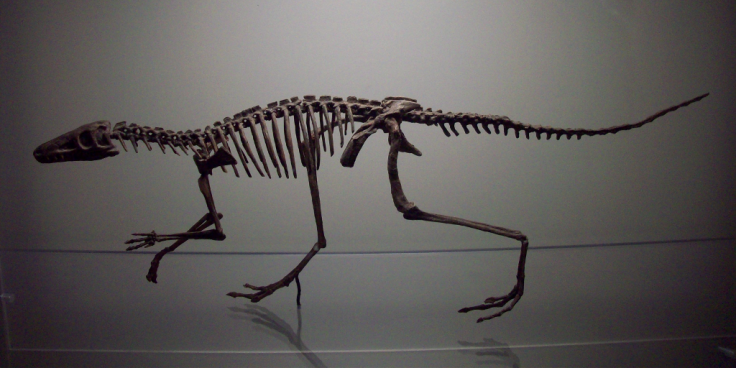Scientists Discover Footprints of Dinosaur Ancestors the Size of Dogs
Palaeontologists discover fossilised traces of dinosaurs' forefathers in a Polish quarry

Scientists say they have discovered footprints which are the remains of a prehistoric creature from which dinosaurs evolved.
UK researchers say the footprints they discovered in Poland were made by animals known as dinosauromorphs, and are several million years older than any previously discovered dinosaur remains.
The trail of footprints, discovered in a quarry in Poland, has all the features of the way a dinosaur walked, but dates to about 250 million years ago: before the earliest dinosaurs are thought to have roamed the planet.
Palaeontologists have also found the remains of an animal that lived about 245 million years ago in southern Africa. This fossil is also several million years older than previously discovered fossils.
Dr Richard Butler, a palaeontologist at Birmingham University, worked on the Polish footprints and will present his findings at the British Science Festival at Birmingham University this week.
Dr Butler told The Sunday Times: "Dinosaurs reigned as the dominant large vertebrates on land for 135 million years… Although most attention has been focused on the dinosaur extinction, arguably a more interesting question is how the dinosaurs evolved in the first place."
Dinosaurs arrived 5 million years early
Dr Butler's paper concludes: "We found footprints… which shift the origin of the dinosaur lineage back to about 249-251 million years ago, which is 5-9 million years earlier than indicated by body fossils, earlier than demonstrated by previous footprints records, and just a few million years after the Permian/Triassic mass extinction 252 million years ago."
This extinction event happened when a massive volcanic eruption caused the Earth's climate to change so dramatically it wiped out almost every animal species.
Dr Butler suggests that the creature that made the footprints appeared after the Permian/Triassic extinction, it is best described as a 'dinosauromorph', as it is similar to dinosaurs, but it's not yet possible to confirm that they evolved to become dinosaurs. In time more research will emerge to fill in the gaps of what scientists currently don't know.
"Recent discoveries have placed the Polish Triassic record as a key to understanding the ascent of the dinosaurs," he added.
Dr Paul Barrett, from the Natural History Museum, said: "Back then, Earth's continents were joined in one supercontinent we call Pangaea, so animals that evolved in one area could reach others. This animal was about the size of a medium-sized dog and would probably have been a carnivore.
"Dinosaurs are defined by anatomical feature relating to their hips and hind legs, and this is on the cusp of what you call a dinosaur."
© Copyright IBTimes 2025. All rights reserved.





















